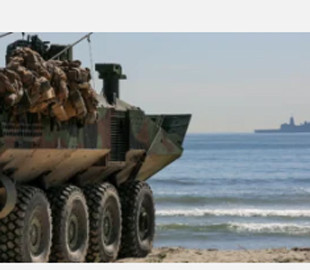
The company Kongsberg Defense & Aerospace has been awarded a contract by the US Marine Corps to supply key components for the ACV-30 30mm Amphibious Combat Transporter program, marking the start of series production for this vehicle model.
It is noted that the contract for  $51 million includes sub-components related to the Kongsberg 30mm Remote Controlled Turret in Johnstown, in Pennsylvania.
It is known that this contract is part of a framework agreement for up to $329 million. Under the terms, Kongsberg will supply a stabilized, remote-controlled MCT-30 turret for the ACV-30, which provides the necessary protection for the Marines while leaving enough room to transport personnel and cargo, while keeping the crew under armor.
The remotely operated turret saves the space used in traditional turret systems, providing more space for transporting troops or critical equipment, while also reducing weight, which improves maneuverability.
200% Deposit Bonus up to €3,000 180% First Deposit Bonus up to $20,000ACV-30 became a representative of the next generation of transporters created for moving marines from ships on the shore.
The transporter is designed as a replacement for the aging amphibious combat transporter AAV, which has been in service since 1972, so the ACV-30 will the primary means of tactical mobility for an infantry battalion of the Marine Corps at sea and on land, and will also provide organic fire support for infantrymen during an attack.
According to plans, the US will begin delivery of ACV-30s with enhanced lethality equipped with 30mm guns by FY2025, and the first ACV-30 variant was delivered for testing in February 2024.
Although  ;production of the ACV-30 has already begun, as part of the program, the US Marine Corps plans to reduce purchases of the transporters in fiscal years 2025 and 2026 by 48 units due to cost constraints, inflation and higher expectations of supplier offers, which could lead to ;a number of questions regarding future purchases and the impact on future program costs.
At the same time, the Marine Corps intends to decide whether these 48 units will be offset after 2026 or will this reduce the overall ACV procurement numbers .

